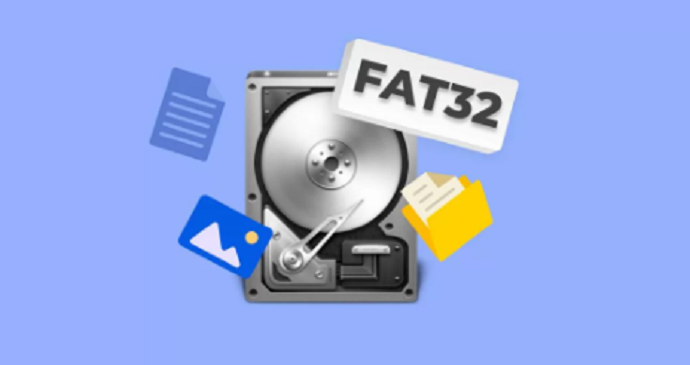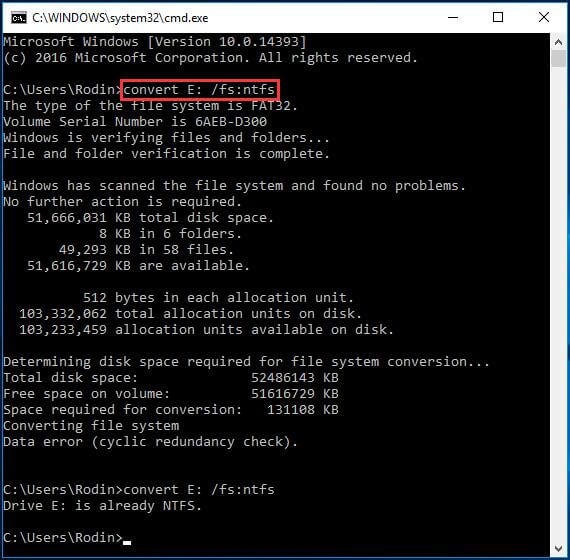The Real Thinking Behind 32GB Windows Format- The Engineer's Answer
The real thinking behind the Windows 32GB format limit on FAT32 was done by Dave Plummer, a Microsoft engineer, in the 1970s. Plummer pondered what cluster size to use with a deep consideration of Windows' future users. His options were to define the appropriate volume size since the FAT32 file system already contained the maximum number of clusters.
He considered it a waste of space to use FAT32 on large volumes. If he attempted to increase the cluster size, it would also need an increase in volume, which would be costly and a waste of valuable space. His option was, therefore, to choose a 32-kilobyte cluster size that would leave behind no little space, even when it stores the smallest file with a few bytes.
His real thinking behind the 32GB Windows format limit on FAT32 was to promote its efficiency by minimizing the unnecessary space left after storing some data. You can know more about the thinking via the YouTube video made by Dave Plummer.
What Is FAT32?
FAT32 is a version of the File Allocation Table(FAT) that uses 32 bits of data to identify data clusters within a given storage device. FAT32 is most common since its compatible with different devices, including:
- Smartphones
- Computers
- Digital cameras
- Cameras
- Gaming consoles, etc.
The file system also works on different operating systems, including Windows 11/10/8/7, Windows 95 OSR2, Windows 98, Windows XP, and Windows Vista. Microsoft mainly introduced FAT32 to increase file system capacities and support more character names (255).
If a drive failure occurs, FAT32 will move the root directory to a new location and use the backup copy. FAT32 is also known for reducing cluster waste since it uses smaller cluster sizes in situations where the drive capacity is small, and any reduction could be meaningful.

The Influence of 32GB Windows Format Limit on FAT32
Microsoft chose 32GB as the maximum partition size for a FAT32 file system. The main reason for this was to promote its new file system (NTFS), considered more efficient when working with large partitions. Despite that, the 32GB limit on FAT32 has influenced the file system differently. These include the following:
- Maximum file size of 4GB. If you have a file large than 4GB, the FAT32 file system won't allow you to save it. You'll receive errors such as "The Parameter Is Incorrect" or "The File Is Too Large for Destination File System.”
- A maximum partition size of 2TB. FAT32 doesn't allow you to partition a hard drive of 3TB or more. Therefore, you'll need to install a third-party partition tool to format large partitions. This is not possible with Windows Disk Management since it will only allow you to partition at most 32GB.
- No journaling. Since FAT32 doesn't support file journaling, the system is more prone to file corruption. Such a problem is not common with a modern file system like NTFS because it has a journaling system that logs in changes to the drive before you make them. Therefore, it won't take long to recover the operation if you encounter a power failure when writing on the disk.
- Doesn't support file permissions. The main reason for file permission is to enhance the security of your data. Since FAT32 doesn't allow you to set file permissions, you cannot prevent a given program from being modified by different users. You'll also not restrict user access to specific files stored on your system. This is unlike the NTFS file system, which is quite secure.
Despite the many limitations of the 32GB Windows format on FAT32, you can still find ways to break the barriers using third-party tools or command prompts.
The Real Reasons for 32GB Windows Format Limit on FAT32
Plummer says that the 32GB Windows format limit on FAT32 hasn't been changed by anyone because "I said so." Although it was his personal decision at the time, he still believes he did the right thing. When testing the maximum file limit to apply on FAT32, Plummer argues that the largest memory card at his disposal was 16MB.
He, therefore, used this capacity when testing the FAT32 file system that he had created as an engineer at Microsoft. He multiplied the 16MB capacity by a thousand and then doubled it to obtain the maximum file size that could forever work for any device running on NT 4.0. He, therefore, picked 32GB as the limit.
Plummer also asserts that he based his decision on the theory that 16TB is currently the maximum volume size for a file system. If other developers changed this value, it could drastically override the presets, including FAT32. Developers had to stick with the decision made by Plummer (of limiting 32GB format to FAT32) to avoid any conflicts with the file system already in existence.
This is, therefore, the real reason for the 32GB Windows format limit on FAT 32 to date.
How Can You Break the FAT32 File Size Limit?
The easiest way to break the FAT32 size limit is to use the command prompt because it’s available for most Windows computers. With the command prompt, you can solve Windows boot issues, manage disks, and execute batch files. Command prompt can help your break the limitations of FAT32 by converting it to NTFS through the following steps:
1. Press the Windows key + R to open the run dialog box.
2. Type “cmd” to open the command prompt.
3. Next, type “help convert” and press the Enter key.
4. Type the following command at the command line prompt: convert (drive letter): /fs:ntfs.

5. Once the conversion process is complete, type Exit to quit the process. You've now converted the FAT32 partition to NTFS; hence no further limitations concerning the 32Gb file size.
Or you can read this article for a more overall guide on how to convert FAT32 to NTFS
Note: Once the conversion process completes, you will likely see an error message: “Data Error (cyclic redundancy check).” However, this should not worry you much since you’ve already converted your partition to NTFS.
You’ll need to go to Disk Management and check the error. Something else to note is that once you’ve converted your FAT32 to NTFS, the process is irreversible. You should therefore be cautious about this issue.
Was This Page Helpful?
Cedric Grantham is a senior editor and data recovery specialist of EaseUS. He mainly writes articles and how-to tips about data recovery on PC and Mac. He has handled 10,000+ data recovery cases and is good at data recovery of NTFS, FAT (FAT32 and ExFAT) file systems, and RAID structure reorganization.
Daisy is the Senior editor of the writing team for EaseUS. She has been working at EaseUS for over ten years, starting as a technical writer and moving on to being a team leader of the content group. As a professional author for over ten years, she writes a lot to help people overcome their tech troubles.
Related Articles
-
Complete Guide of SATA Cable[Definition, Types, Usage & Differences]
 Larissa/2024-02-21
Larissa/2024-02-21 -
OneDrive Backup vs. Sync: What Are the Differences
 Cedric/2024-01-11
Cedric/2024-01-11 -
Windows 11 Download: How to Download and Install Windows 11 [3 Ways]
 Cedric/2024-10-25
Cedric/2024-10-25 -
What Is Bootrec.exe? Everything You Need to Know About This Tool
 Daisy/2024-01-11
Daisy/2024-01-11
